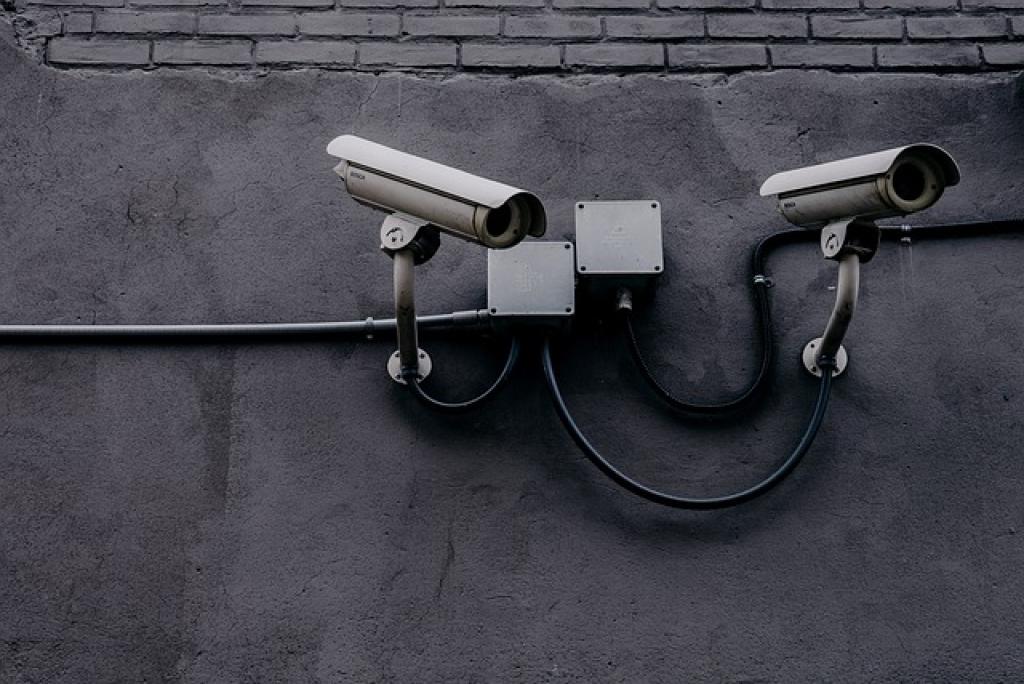
Essential Security Tips for Business Owners Leasing New Spaces
Dreaming of your business in a new space feels like a fresh start—a place where innovation meets opportunity. But, before you get too caught up in floor plans and paint swatches, it’s crucial to consider the safety of that new environment.
Security isn’t just about installing a nifty alarm system. It’s a holistic approach that ensures your business, employees, and customers remain protected. Whether you’re walking into a warehouse, retail space, or office building, prioritizing security right from the start can save you from headaches down the line.
From choosing the right location to implementing state-of-the-art security measures, you’ll want a comprehensive strategy. Let’s dive into the essential security tips every business owner needs to keep top of mind when leasing a new space. It’s all about being proactive, staying informed, and ensuring that your new venture is as secure as it is successful!
Securing Physical Premises: Key Considerations
When it comes to securing your new business space, the basics are your best friend. First, take a good look at the building’s infrastructure. Are the doors and windows sturdy enough? Solid locks and reinforced entry points can do wonders in keeping unwanted guests at bay.
Lighting is another critical factor. Ensure that all entryways and parking areas are well-lit. Darkness is a burglar’s best ally, so let the light shine bright and keep them at bay. Motion-sensor lights aren’t just a fancy touch—they’re an effective deterrent.
Surveillance and Monitoring
Investing in a reliable security camera system is a modern-day necessity. Not only do cameras act as a deterrent, but they also provide essential evidence if anything goes awry. Connect them to a monitoring system so you can keep an eye on things remotely.
Don’t forget about staff and customer safety inside the premises. Arrange to have an emergency plan in place, complete with clear exit paths and meeting points. Communicate this plan regularly to everyone.
Lastly, developing a relationship with nearby business owners can be invaluable. A strong community network can keep you in the loop about potential threats while contributing to an overall safer environment.
Understanding Lease Agreement Security Clauses
Navigating the lease agreement is often complex, but don’t let the security clauses slip under your radar. These clauses define who takes responsibility for what, ensuring that both parties are clear on their roles in maintaining a secure environment.
Start by identifying any obligations regarding security systems. Some landlords may require tenants to install certain types of equipment. Confirm if you’re allowed to make modifications, such as installing additional locks or cameras.
Landlord vs. Tenant Responsibilities
It’s crucial to pin down who handles repairs and maintenance of security devices. If a lock needs fixing or a camera goes offline, know whether it’s your task or something the landlord must address. This helps prevent misunderstandings and delays in resolving security issues.
Another key element is the insurance requirements. Check if the lease mandates specific insurance coverage levels, and ensure that your policy meets or exceeds these standards. This is not only crucial for compliance but also for safeguarding your investment.
Communication is key. Discuss any ambiguities or concerns with your landlord before signing the lease. It’s better to clarify everything upfront than be caught unprepared when it comes to protecting your business.
Implementing Access Control Systems
Enhancing security with access control systems is a smart move for any business. These systems allow you to decide who enters specific areas, adding an extra layer of protection beyond traditional locks.
Start with an assessment of your building’s traffic flow. Identify which areas require restricted access and tailor your system accordingly. Main entrances, server rooms, or areas with confidential information might need higher security levels.
Types of Access Control
Options range from key card systems to biometric scanners. Consider usability, cost, and level of protection needed when selecting a system. Key card systems are versatile and easy to manage, while biometric options offer a higher security level by using unique identifiers such as fingerprints.
Training your team on how to use the new system is essential. They need to understand not only how to operate it but also the importance of maintaining its integrity—like not sharing access credentials.
Regular audits of the access system can prevent potential breaches. Review access logs periodically to spot unusual activity and rectify any irregularities. Keeping your system up to date with the latest software is another way to ensure you’re one step ahead of potential threats.
Access control systems can give you peace of mind, ensuring that your business environment stays secure and well-regulated.
Securing Data and Information
In the digital age, securing physical premises is only one part of the equation. Protecting your business’s data and information is equally critical to maintaining overall security.
Start by assessing the current state of your digital infrastructure. Ensure that all software is up-to-date and that systems are protected with strong, unique passwords. Consider implementing multi-factor authentication for an extra layer of defense against unauthorized access.
Investing in quality cybersecurity software can safeguard your business from malware and cyber-attacks. Regularly back up data, preferably using both cloud-based and physical storage solutions, to prevent loss in case of breaches or hardware failures.
Train your employees on data protection best practices. Make sure they recognize phishing scams, use secure networks, and understand the sensitivity of the information they handle. Establish clear protocols to minimize risk, like ensuring sensitive data is only accessed through secure systems.
Data breaches aren’t just about immediate losses—they can impact your reputation and customer trust. Staying vigilant and proactive in securing data is vital for maintaining the integrity and success of your business in its new space.
Emergency Preparedness and Response Protocols
Being prepared for emergencies is crucial to ensure safety and minimize damage. Crafting a robust emergency response plan is not only a necessity but an investment in your business’s resilience.
Start by identifying potential risks specific to your new location. These could include natural disasters, fires, or security breaches. Develop protocols that address each scenario, ensuring that your employees understand their roles in an emergency.
Employee Training and Drills
Regular training sessions are vital for keeping emergency procedures fresh in everyone’s minds. Conduct drills for different situations, such as fire evacuations or lockdowns, so that your team knows exactly what to do when it counts.
Ensure that all emergency equipment, like fire extinguishers and first-aid kits, are easily accessible and regularly maintained. Post clear signs throughout the premises, marking exits and assembly points to streamline evacuations.
Establish a communication plan to quickly disseminate information during an emergency. This could involve phone trees, mass emails, or messaging apps tailored for business use. Keep contact information for all employees up to date and stored in a secure but accessible location.
An effective emergency response plan is about more than just procedures—it’s about fostering a culture of preparedness. Equip your team with the knowledge and tools they need to act swiftly and confidently in any situation.
Employee Training on Security Best Practices
Your security measures will only be as effective as the people implementing them. Training your employees on security best practices is vital to creating a safe and secure work environment.
Begin by establishing a baseline understanding of security principles. Cover topics such as recognizing suspicious behavior, safeguarding sensitive information, and proper protocol for accessing secure areas. Equip your team with the knowledge to identify and report potential threats before they escalate.
Encourage a culture of vigilance by incorporating security discussions into regular meetings. Provide opportunities for employees to voice concerns or ask questions about security measures. This not only reinforces their role in maintaining a secure workplace but also fosters a team-oriented approach to safety.
Introduce regular refresher courses to ensure everyone stays updated on the latest security practices. Consider inviting security experts or conducting workshops to provide fresh insights and strategies that employees can apply to their daily responsibilities.
Finally, develop a system for recognizing and rewarding employees who exemplify excellent security practices. Acknowledging their efforts can motivate others to follow suit, creating a proactive environment where security is prioritized by all.
The Bottom Line: Ensuring Comprehensive Security Measures
Taking the leap into a new business space is exciting, but securing that environment should be at the top of your priority list. By addressing physical, digital, and procedural aspects, you set the stage for a successful operation.
Start with the fundamentals by fortifying your premises. Reinforce entry points, install effective lighting, and implement a surveillance system to deter potential threats. Then, don’t forget the importance of reading your lease agreements thoroughly; understanding security clauses ensures no surprises down the road.
Moreover, the implementation of access control systems empowers you to monitor and regulate who enters your business, adding a critical layer of protection. Simultaneously, keeping your data secure protects your business from the less visible, yet equally impactful, digital threats.
Your emergency preparedness is your safety net in unforeseen situations. Regular drills and clear communication systems streamline responses when seconds count. Furthermore, ensuring your employees are well-trained in security protocols maximizes the effectiveness of these measures.
In essence, a multi-faceted security approach promotes a safe environment, protecting your investment and everyone involved. As you step into new opportunities, let these comprehensive security measures build a foundation of confidence and peace of mind, allowing your business to flourish with fewer worries. Whether you’re just starting out or transitioning to a new space, taking these actionable steps empowers you to focus on what truly matters—building and growing your business.


